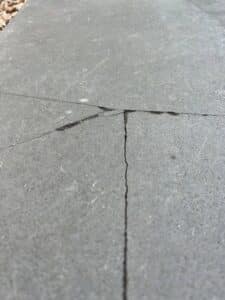House stumps fail because of rot, corrosion, and rust. Stumps made of timber can become weak as they soak up moisture, which results in rotting. Meanwhile, concrete stumps face corrosion, and steel ones get rusty over time.
If you notice the stumps in your home begin to deteriorate, it’s best to call a Geelong restumping expert for help. These professionals can help prevent issues that could get worse over time.
In this post, we’ll discuss the reasons behind house stump failure, focusing on timber, concrete, and steel house stumps.
What Causes House Stumps to Fail?
Timber house stumps fail because of rot, concrete stumps to corrosion, and steel stumps to rust. Let’s take a closer look at each one below.
Why Timber Stumps Fail
Timber stumps can deteriorate due to rot from excessive moisture. Once wood absorbs water, it begins to decay, weakening its stability. Regular inspections are essential to detect and address early signs of rot before they become significant issues.
Pest infestations, especially termites, can also damage timber stumps, further undermining their structural integrity. By ensuring early detection and maintenance of all types of footings, the overall stability of the structure can be preserved.
Why Concrete Stumps Fail
Concrete stumps can deteriorate due to corrosion, particularly in damp or acidic soil. Over time, water and chemicals seep into the concrete, weakening its structure. Ensuring proper installation with high-quality materials can help prevent this issue.
Ground movement or insufficient support may also cause concrete stumps to crack or shift, leading to structural instability and potential failure. Regular inspections and maintenance are essential to identify these problems early and address them effectively.

Why Steel Stumps Fail
Steel stumps can deteriorate due to rust, particularly in wet conditions. Rust weakens steel, making it less reliable. Regular inspections and protective coatings are essential for preventing corrosion and maintaining the strength of steel stumps.
For those near the coast, saltwater exposure can accelerate corrosion, so additional maintenance is necessary to ensure longevity. By staying proactive with care and choosing the right materials, the integrity of steel stumps can be preserved effectively.
Lifespan of Different Types of House Stumps
The following are the lifespans of stumps according to material:
Lifespan of Timber House Stumps
Timber house stumps usually last between 20 and 40 years. Timber has the shortest lifespan among the three types of stumps because it’s more susceptible to rot, especially in damp conditions.
Lifespan of Concrete House Stumps
Concrete stumps generally last 50 years or more. Although they’re less prone to decay, damp environments can reduce their lifespan if internal steel corrodes. Regular inspections for signs of corrosion will help maintain their longevity.
Lifespan of Steel House Stumps
Galvanised steel house stumps typically last around 70 years or more. Reaching this impressive age requires consistent upkeep and protection against rust, especially in humid or coastal environments where salt accelerates corrosion.

